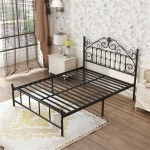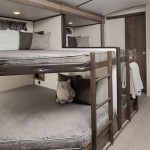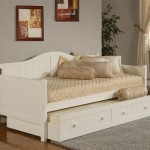Do Bed Bugs Get Into Memory Foam Mattresses?
Memory foam mattresses are known for their comfort and ability to conform to the body's shape. However, a common concern among homeowners is whether these mattresses are susceptible to bed bug infestations. The answer is, unfortunately, yes. Bed bugs can and do get into memory foam mattresses, just like they can infest other types of mattresses and bedding.
Bed bugs are small, parasitic insects that feed on human blood. They are experts at hiding in tight spaces and crevices, making them difficult to detect and eradicate. Memory foam mattresses, with their dense and porous nature, offer a welcoming environment for bed bugs to nest and reproduce.
Bed Bug Infestation in Memory Foam Mattresses
The porous nature of memory foam allows bed bugs to easily burrow into the material, creating hidden havens where they can lay eggs and escape detection. The density of the foam also makes it challenging for conventional pest control methods, such as vacuuming or steam cleaning, to reach and eliminate bed bugs effectively.
Bed bugs can access memory foam mattresses through various routes:
- Seams and Stitching: Bed bugs can easily squeeze through seams and stitching on the mattress cover, providing access to the foam beneath.
- Edges and Corners: The edges and corners of the mattress, particularly along the frame, offer ideal hiding places for bed bugs.
- Loose Threads and Fabric: Loose threads and fabric can create pathways for bed bugs to enter the mattress.
- Mattress Foundation and Box Spring: If the mattress foundation or box spring is infested, bed bugs can easily migrate to the memory foam mattress.
Signs of Bed Bug Infestation in Memory Foam Mattresses
Detecting bed bugs in a memory foam mattress can be challenging due to their ability to hide effectively. However, there are a few signs to watch for:
- Bites: Bed bug bites are often itchy, red welts that appear in clusters or lines.
- Bloodstains: Bed bugs may leave small bloodstains on the mattress, sheets, or pillowcases after feeding.
- Fecal Spots: Bed bug droppings are small, black specks that resemble pepper.
- Eggs: Bed bug eggs are tiny, white oval-shaped objects that may be found on the mattress or surrounding areas.
- Shedding Skins: As bed bugs grow, they shed their skins, which can be found on the mattress or nearby surfaces.
- Musty Odor: A musty odor may be present in the room or on the mattress if bed bugs are present.
Preventing Bed Bug Infestation in Memory Foam Mattresses
Preventing bed bugs from infesting your memory foam mattress is essential for maintaining a pest-free environment. Here are some practical steps to take:
- Regular Inspection: Regularly inspect your mattress for signs of bed bugs, including bites, droppings, and egg casings.
- Mattress Cover: Use an encasement made of tightly woven fabric, preferably zippered, to prevent bed bugs from entering the mattress.
- Vacuum Regularly: Vacuum your mattress and surrounding areas regularly, paying particular attention to seams, edges, and crevices.
- Avoid Clutter: Keep the bedroom tidy and free of clutter, as this can provide hiding places for bed bugs.
- Wash Bedding Regularly: Wash your bedding, including sheets, blankets, and pillowcases, in hot water and dry them on a high heat setting to kill any bed bugs.
- Inspect Used Furniture: Thoroughly inspect any used furniture, especially mattresses, before bringing them into your home.
- Travel Safety: When traveling, avoid placing luggage on the bed or floor. Use luggage racks and inspect hotel rooms for signs of bed bugs before settling in.
If you suspect a bed bug infestation in your memory foam mattress, professional pest control is necessary to eliminate them. A qualified pest control professional can inspect your mattress, identify the source of the infestation, and apply appropriate treatment methods. Prompt action is crucial to prevent the infestation from spreading and becoming more challenging to resolve.

Bed Bugs On Memory Foam Mattress How To Handle Them

Can Bed Bugs Live In Memory Foam Our Guide On And F Hibermate

How To Check Mattress For Bed Bugs Memory Foam Talk

How To Check Mattress For Bed Bugs Memory Foam Talk

Can Bed Bugs Live In Memory Foam Our Guide On And F Hibermate

How To Check Mattress For Bed Bugs Memory Foam Talk

Mattress Bed Bugs Signs Removal Memory Foam Warehouse

How To Get Rid Of Bed Bugs In A Mattress Eachnight

Can Bed Bugs Live In Memory Foam Getridofallthings Com Mattress

How To Check Mattress For Bed Bugs Memory Foam Talk
Related Posts







